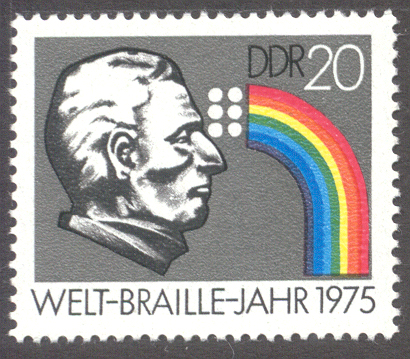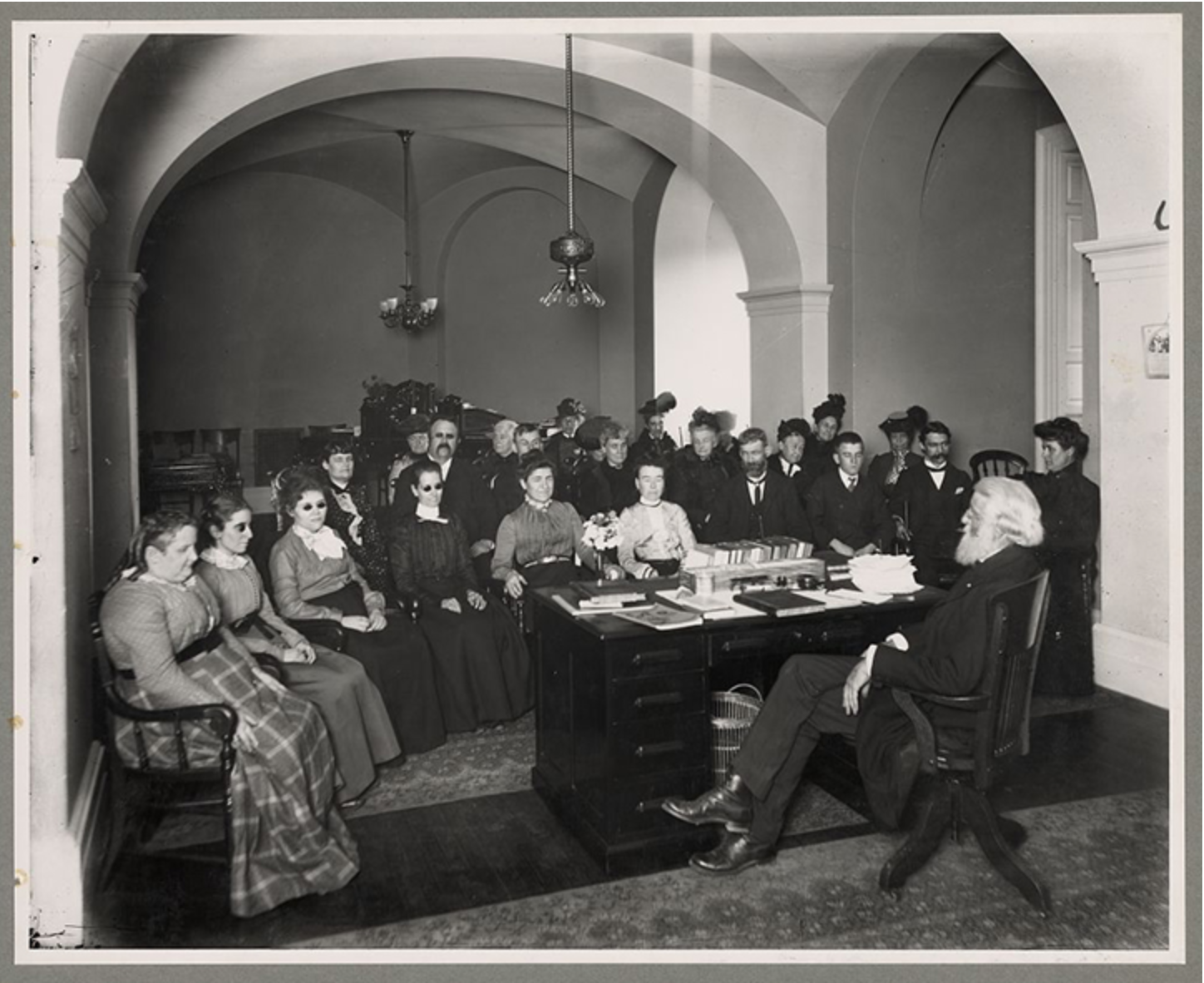
A Russian postage stamp in 1959 celebrating 150th anniversay of Louis Braille's birth.
(Credit: American Printing House for the Blind)
Louis Braille's six-dot cell method became successful internationally. The system of Braille provided the blind community an opportunity to experience a social, political, and cultural life by enabling them to see the world through their fingertips. This development led to special books and resources cultivated specifically for those who were visually impaired and eventually allowed for wide-spread education of people who were unable to learn traditionally. Aside from books and documents, Braille is seen on receipts, bills, menus, music notes, elevator buttons, prescription medicine, legal paperwork, etc.

Postage stamp created in 1975 in East Germany, celebrating Braille.
(Credit: Manfred Gottschall)


